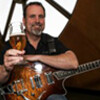Our seventh version of the Vertical Epic series was inspired by some of the wonderful Belgian beers that Steve and I tasted during our trips to Europe to brew “Stone California Double IPA” at the Shepherd-Neame brewery in Kent, England. This ale was served at the J.D. Wetherspoons pub chain during their International Real Ale Fest in March of 2008, and was great to brew and a very fun project, but that’s another story. Brussels is about a 2 hour train ride from London (going through the “Chunnel”) so one weekend while we were in England, we decided to shift gears from our steady diet of cask-conditioned English Ales and make the quick trip to Belgium. We had many great beers during the 2 day visit, as well as nice tours of Palm Brewery and Cantillon. And don’t ever miss the Belga Café in Brussels-the hand pumped Boon Gueuze was unbelievable! One of the best beers we had was a rare bottle given to us by Glenn Payne, one of our companions for the trip. We brought this bottle of Duvel Triple Hop back to Escondido with us and Steve and I tasted it with Greg and John Egan, and pretty much decided right then and there to brew a hoppy Belgian Golden for our 2008 Epic. We wanted to brew a beer that demonstrated some of the same flavor characteristics: dry, crisp, intense Belgian tropical fruit and clove yeast character, and citrus-derived complexity provided by American hops used at a fairly high rate (not unusual for us, by any means!). And despite the hop shortages we are struggling through, we said “damn the torpedoes” and brewed 12 batches of this strong Belgian Golden Ale that comes in at 65 IBU’s, and is dry hopped with a blend of Simcoe and Amarillo hops. Here is the homebrew recipe for this beer. The hops may be hard to come by, but I can say that we ran trials with many hop varieties, and they all worked! Some better than others, but if you dry-hop with a good high-alpha American hop, you are going to be happy with the results! Grain Bill Pale Malt - 87% Flaked Oats - 6.5% Light Candi Sugar Syrup - 5.5% (added to boiling wort) Blonde Candi Sugar Powder - 1.0% (added to boiling wort) Note that the idea here is to make a very pale, dry wort. Any light candi sugar will work, but stay away from any amber or dark candi sugars, and avoid any caramel or dark malts. Using the above ingredients and a long, low temperature conversion rest during the mash, we were able to get a terminal gravity of just under 2°P. Hop Bill Boil: Simcoe hop pellets 2.71 grams/gallon (.095 oz/ gallon) Amarillo hop pellets 2.71 grams/gallon (.095 oz/ gallon) Whirlpool (or end of boil) for Flavor: Ahtanum hop pellets 5.42 grams/gallon (.19 oz/gallon) Dry-Hopping: Simcoe hop pellets 2.71 grams/gallon (.095 oz/ gallon) Amarillo hop pellets 2.71 grams/gallon (.095 oz/ gallon) We absolutely love the combination of Simcoe and Amarillo hops. This is what we used in the Stone 11th Anniversary Black IPA last year, and it turns out we liked the combination for dry-hopping this beer also. The Ahtanum we use in the whirlpool is a great hop, it’s the signature hop of our Stone Pale Ale, and provides a nice combination of citrusy, herbal and earthy flavors. Yeast White Labs WLP 570 (Belgian Golden Ale Yeast) This is the first time we’d really used this yeast. It’s a good strong fermenter, produces a lot of phenolic and clove character, and doesn’t flocculate worth a damn. It was a bear trying to filter this beer. Feel free to use another Belgian strain if you want your beer to be more clear, but we liked the flavors that this strain produced! And Here are the Specifications Starting Gravity 19.0°P (1.076 SG) Terminal Gravity 1.9°P (1.008 SG) ABV 8.9% IBU 65 The Brewing Process First, make sure you stock up on some good Belgian Ales to inspire you during your brew day. Houblon Chouffe, Lost Abbey Inferno, Urthel Hop It, (and Duvel Triple Hop if you can find it) will all work wonderfully! Add to this a nice plate of stinky cheeses and you’ll be living the dream. Milling Mill your grain using a medium grind profile. Don’t mill too tightly, the flaked oats will make lautering tough enough. We used American 2 Row malt, but Canadian 2 Row or Pilsner malt are both good substitutes. Heat your mash water up to boiling in order to drop out some calcium and flash off the chlorine in the city water, then let it cool down to strike temperature. We’re going to use a fairly low conversion rest temperature with this beer, so let the water cool down to about 160°F or so. If you like to use mineral additions, this is a good place to add them. Note that our brewing water is about 100 ppm hardness. Mashing Mash in the pale malt and flaked oats with your mash water until you get 148°F mash. This beer has a long conversion at a fairly low temperature, designed to create a dry beer with a low terminal gravity, so maintain the 148°F temperature for 120 minutes. I never liked using burners on mash vessels during conversion, I was always afraid of scorching grain on the bottom of the pot and getting burnt caramel flavors in my beer. I’ve found that a 10 gallon insulated water cooler (what you see behind the bench of football games or in the dugout at baseball games) hold their temperature incredibly well, and there are homebrew suppliers who sell false bottoms designed specifically so these containers can be used as a mash/lauter combo vessel. With such a long conversion rest, you not only have plenty of time to get your hops together, measure out the candi sugar, and get things ready for the next few steps, but you should also have time for some relaxation. So take some time to enjoy a brew! . Lautering After a 120 minute conversion rest, vorlauf (circulate) your wort by drawing the wort off the bottom and gently adding it back over top of the grain bed. Repeat this process until the wort is reasonable clear. This helps set the grain bed to clarify the wort by re-depositing the small particles (that could negatively affect your beer flavor and also clog up your lautering) back on the top of the grain bed. After the wort is reasonably clear (a little haze is OK, but clumps of grain are not), start transferring wort to the pot for the boil. When the wort level in your mashing vessel reaches about ½” to 1” above your grain bed, gently start adding sparge water that has been heated to 165-170°F. Again, boil the water first, then let it cool down to the target temperature. Maintain a liquid level about 1-2” above your grain bed by continuously gently adding sparge water. A note here about batch sparging, which is the technique of drawing the wort off until you pull the grain bed dry, then adding sparge water until you are over the level of the grain bed, and repeating the process until you are at kettle full. Yes, you will increase your extract recovery using this method, and it is easier than trying to maintain a liquid level over the grain bed while filling your kettle. But you are also oxidizing your grain bed by exposing it to air, which can reduce the freshness of your final beer. Also, when you pull until the grain bed is dry, you compact the bed, and adding more sparge water on top can cause stuck run-offs, though that problem is rare. I still don’t recommend batch sparging. Draw off wort until you reach your target wort kettle volume or your wort reaches 2.5°P. Going any lower in sugar concentration can result in extracting harsh flavors from the malt husks. About ½ way through the lautering process, start heating your wort in the kettle pot to boil. The idea is to be at boil ASAP after reaching your target kettle fill volume, and it never hurts to get a head start. The Boil After your wort has reached boil, add the Simcoe and Amarillo hops. This is also when you want to add the Candi Sugar. We like using the Candi Sugar in powdered or syrup form, the crystallized form is harder to work with to get dissolved efficiently in the boiling wort, but use whatever form you like, as long as it is light/clear and does not add any color to the wort. Honey and table sugar or dextrose can also be used. After the boil has stabilized, the wort chiller and fermentor are ready, take a break and have a brew. Don’t leave the boil unattended though! How many horror stories have you been aware of where the pot boiled over? What a sticky mess, doesn’t matter if you brew inside on the stove or outside on a burner, a boil over is no fun! Whirlpool After your boil is complete (at least 60 minutes, and hopefully you can measure your wort gravity), turn off the flame and add the Ahtanum hops. Stir them in and get the wort spinning so a nice trub pile forms in the bottom of the pot. Let the wort settle for 15 minutes or so, then decant off the clear wort through a wort chiller and into your fermentor (or use an immersion chiller, whatever method works best for you). Chill the wort to about 75°F. Fermenting I recommend building a starter 1-2 days in advance when using any Belgian yeast. It works better for us, we get more complete fermentation in a shorter time frame. Add the yeast to the sanitary fermentor, before adding the wort. Hopefully you have enough yeast built up to get an initial cell count of about 25 million cells per ml wort after pitch. Fill the fermentor at 72-75°F, and mix the wort to aerate it (or aerate it using a more technical method if you have it). Allow the temperature of the wort to free rise as high as 80°F during fermentation. Rack the beer soon after it reaches terminal gravity, dry-hop it with the Simcoe/Amarillo blend, then age cool for a couple of weeks. Package any way you want to, and enjoy it immediately or save for aging as you see fit. The choice is yours.
Try your hand at brewing all of the Stone Vertical Epic Ales. Homebrew recipes for each can be found at:
- Stone 02.02.02 Vertical Epic Ale
- Stone 03.03.03 Vertical Epic Ale
- Stone 04.04.04 Vertical Epic Ale
- Stone 05.05.05 Vertical Epic Ale
- Stone 06.06.06 Vertical Epic Ale
- Stone 07.07.07 Vertical Epic Ale
- Stone 08.08.08 Vertical Epic Ale
- Stone 09.09.09 Vertical Epic Ale
- Stone 10.10.10 Vertical Epic Ale
- Stone 11.11.11 Vertical Epic Ale
- Stone 12.12.12 Vertical Epic Ale


Add new comment